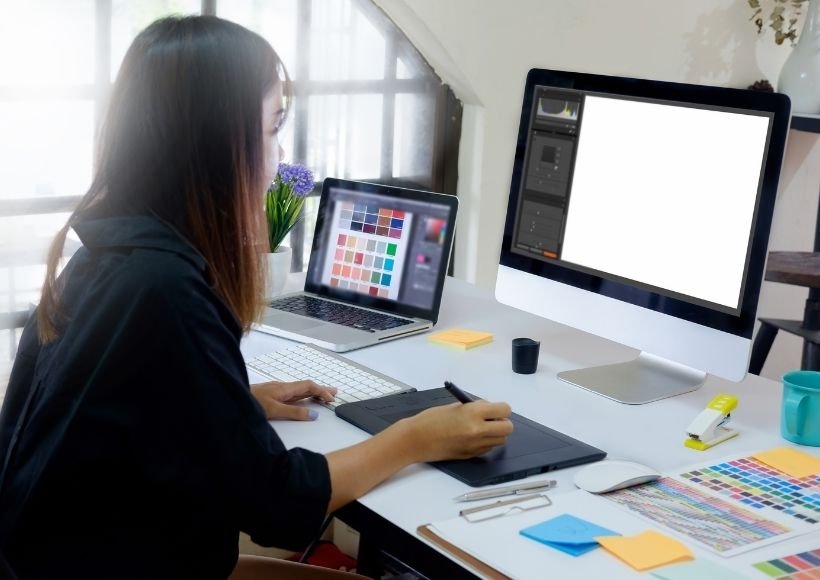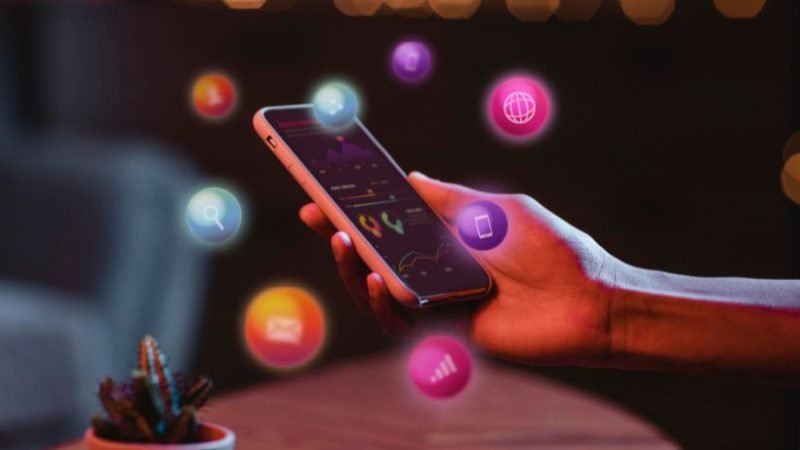Graphic Design – Image Of Your Company

Graphic design involves arranging and utilizing various elements to create visually communicative objects. These objects use meaningful shapes, drawings, and colours to convey messages effectively.
Interpretation, organization, and visual presentation are pivotal, as they profoundly influence the design’s impact. Through deliberate choices in layout and aesthetics, the graphic design achieves its purpose of conveying information and eliciting responses from viewers.
Table of Contents
Who Is The Graphic Designer
A visionary professional graphic designer connects various visual components such as images, colours, typography and layouts to convey messages or concepts visually attractive and effectively. They work across different mediums, including print and digital media, to create designs for advertisements, branding, websites, packaging, and more.
Graphic designers use their artistic skills, design principles, and technical expertise to transform concepts into visual representations that communicate a specific message or evoke a desired response from the audience. Their position is essential in shaping the graphical originality and communication procedures of companies, organizations, and individuals.
How Graphic Design Differs From Web Design
Graphic and web design are connected fields but have different focuses and areas of expertise.
Graphic Design:
The graphic design contains developing visual content for different mediums, such as print materials, logos, brochures, advertisements, and posters. Graphic designers primarily work on static visuals, ensuring that the design elements like typography, images, colours, and layout come together cohesively to communicate a message or idea. They often prioritize aesthetics, composition, and visual storytelling.
Web Design:
On the other hand, web design is concerned explicitly with designing websites and their user interfaces. Web designers consider how users interact with a website, focusing on factors like navigation, user experience (UX), and user interface (UI) design. They integrate graphic design principles into their work but also need to understand web technologies, responsiveness across different devices, and how to create an engaging online experience.
While graphic design affects creating visual content for different mediums, web design is a subset of this field, specializing in developing interactive and user-friendly websites. Both roles require creativity and a good eye for design, but web designers also need to understand the technical aspects of how their designs will function on the Internet.
Typography – Essential In Graphic Design
Typography is a fundamental graphic and web design cornerstone, intricately shaping textual information’s visual and emotional impact. While visuals initially draw the eye, typography reins once attention is captured. Its meticulous application in mediums like posters, pamphlets, and flyers guides readers through explanatory text, infusing it with meaning and emotion.
Typeface selection establishes the design’s character, whether serif for a refined tone or sans-serif for a modern vibe. Size, weight, and letter spacing contribute to legibility and aesthetics. Typography transforms words into a visual language, evoking sensations, establishing hierarchy, and conveying the intended message, ultimately lending depth and resonance to the design’s overall narrative.
The Corporate Image In Graphic Design
In graphic design, the corporate image takes centre stage as it shapes a company’s visual identity and perception. Crafting a distinct appearance and impression is vital, preventing identity fragmentation that could detrimentally impact the business.
Graphic design assumes the crucial role of bestowing identity and acting as a communicative tool via posters, cards, and flyers. This symbiotic relationship with marketing underscores its significance. A company establishes its unique identity through design, communicates effectively, and cultivates a cohesive and memorable brand presence.
The Charge For Graphic Design
The charge for graphic design assistance can differ widely depending on several aspects. These include the complexity of the project, the scope of work, the level of expertise and experience of the designer, the geographic location, and the specific deliverables required.
Simple projects like creating a primary logo or a single-page flyer might cost less. At the same time, more complex tasks such as designing a comprehensive brand identity, a multi-page brochure, or a website would likely be more expensive.
Some designers demand an hourly rate, while others may suggest flat fees for detailed projects. Additionally, the required revisions, iterations, and additional services like printing or web development can impact the overall cost.
It is essential to discuss your project’s details with potential graphic designers to understand their pricing structure and ensure that their rates align with your budget and expectations. Investing in quality design can significantly impact your brand’s perception and success.
Conclusion
Graphic design plays a pivotal role in shaping visual communication and brand identity. It conveys messages through the skilful arrangement of elements and establishes a company’s unique image. The harmonious interplay of typography, colour, and layout creates a powerful means of expression, effectively engaging audiences and conveying emotions. The investment in well-executed graphic design is a strategic move that bridges the gap between creativity and effective communication, leaving a lasting impression on viewers and contributing to a successful visual narrative.
Also Read : What Is The Process Of Designing a Digital Product?




